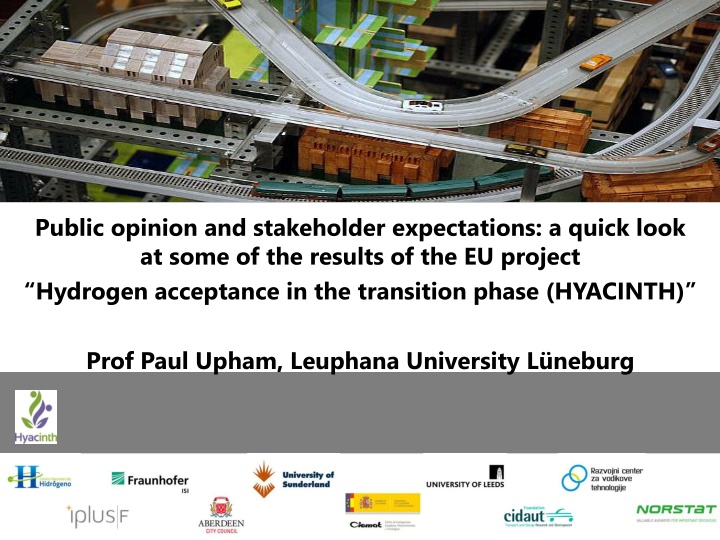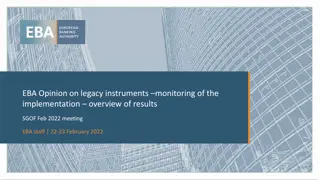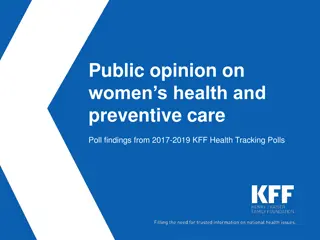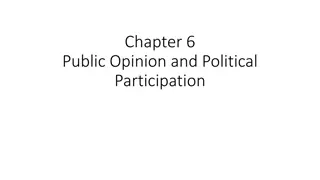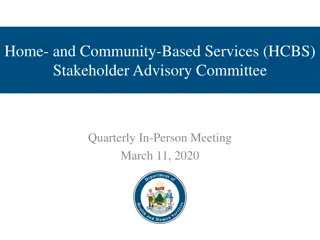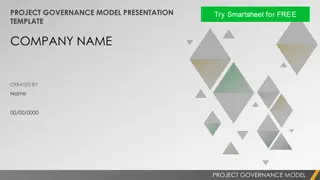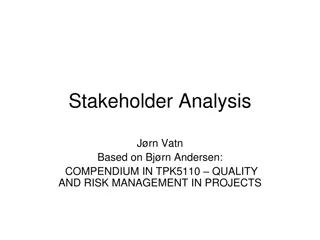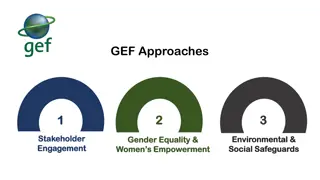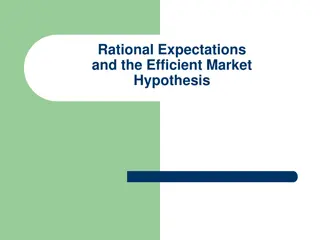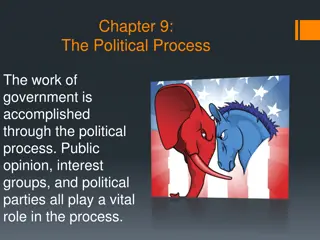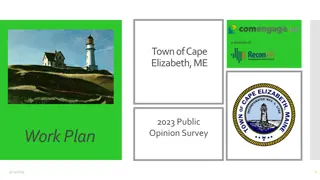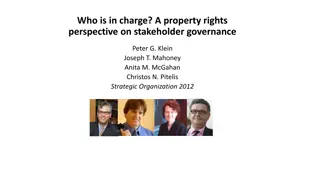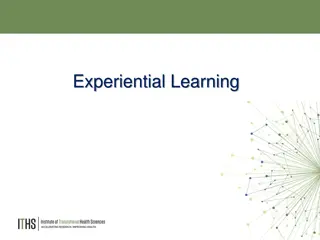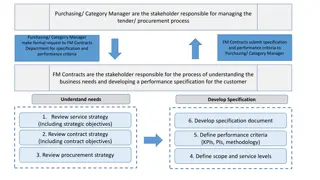Public Opinion and Stakeholder Expectations in EU Project HYACINTH
The EU project HYACINTH focused on public and stakeholder acceptance of hydrogen technologies in the transition phase. Led by Prof. Paul Upham from Leuphana University, the project involved surveying participants across European countries to gauge awareness, acceptance, and support for Fuel Cell and Hydrogen technologies. Through semi-structured interviews and a Social Acceptance Management Toolbox (SAMT), the project aimed to aid decision-makers in integrating social acceptance considerations into their developments.
Download Presentation

Please find below an Image/Link to download the presentation.
The content on the website is provided AS IS for your information and personal use only. It may not be sold, licensed, or shared on other websites without obtaining consent from the author.If you encounter any issues during the download, it is possible that the publisher has removed the file from their server.
You are allowed to download the files provided on this website for personal or commercial use, subject to the condition that they are used lawfully. All files are the property of their respective owners.
The content on the website is provided AS IS for your information and personal use only. It may not be sold, licensed, or shared on other websites without obtaining consent from the author.
E N D
Presentation Transcript
Public opinion and stakeholder expectations: a quick look at some of the results of the EU project Hydrogen acceptance in the transition phase (HYACINTH) Prof Paul Upham, Leuphana University L neburg
Co-authors / researchers: Christian Oltra, Roser Sala, Monica Lores, Elisabeth D tschke, Uta Schneider (& Paula B gel and Paul Wiemann) of Leeds and Leuphana
PROJECT DETAILS Project Title: Hydrogen acceptance in the transition phase (HYACINTH) Call: FCH-JU-2013-1 Period Time: September 2014 May 2017 Funding Agency: Fuel Cell and Hydrogen Joint Undertaking
HYACINTH project PUBLIC STAKEHOLDERS Stakeholder acceptance of FCH technologies across Europe: Public awareness and acceptance of FCH technologies across Europe: Survey Semi-structured interviews 145 participants 5 European countries Survey 333 participants 5 European countries 1000 participants 7 European countries Social Acceptance Management Toolbox (SAMT): To help promoters and decision makers integrate issues related to social acceptance into their developments
PUBLIC SURVEY COUNTRIES PUBLIC ACCEPTANCE STUDY Belgium France Germany Norway Slovenia Spain United Kingdom _____________ 7.148 participants (> 1.000 per country)
PUBLIC SURVEY - DESIGN OF THE QUESTIONNAIRE Figure 1. Summary of the design of the questionnaire 500 respondents 500 respondents Introduction to the study Evaluation of problems Awareness and uninformed evaluation of HFC technologies Background information on HFC technologies Background information on residential HFCs Background information on HFC vehicles Awareness, emotions, perceived costs and benefits Awareness, emotions, perceived costs and benefits Evaluation of consequences Evaluation of consequences Preference, acceptance and support Preference, acceptance and support Other questions: trust, pro-environmental self-identity, engagement with technological issues and life-styles
STAKEHOLDER INTERVIEW COUNTRIES STAKEHOLDER ACCEPTANCE STUDY - Qualitative France Germany Slovenia Spain United Kingdom _____________ 145 interviews
PUBLIC SURVEY- RESULTS Acceptance of home HFCs Total sample: All else equal (price, comfort, maintenance cost, etc.), I would be happy to have an hydrogen fuel cell unit in my home in future . 100% 80% 60% 40% 20% 0% -20% Belgium France Germany Norway Slovenia Spain United Kingdom Disagree Strongly disagree Agree Strongly agree
PUBLIC SURVEY- RESULTS Acceptance of HFCEVs Total sample: All else equal (cost, range, etc.), I would like to purchase an hydrogen fuel cell car in the future 80% 60% 40% 20% 0% -20% -40% Belgium France Germany Norway Slovenia Spain United Kingdom Disagree Strongly disagree Agree Strongly agree
PUBLIC SURVEY- RESULTS Respondents reasons for not being willing to buy a home HFC (multi-response question) I think the price of installing a fuel cell will be too high for my budget I think fuel cells applications for residential use are not a yet Recycling of fuel cells Whole sample I would prefer to invest in renewable forms of electricity and Other disadvantages The hydrogen fuel cells described here rely on fossil fuel Delivery and installation Political and companies interests I would prefer to invest in traditional systems of electricity Suitability for different type of Maintenance, reparations and 0% 20% 40% 60% 80% 100% Hydrogen production Environment, pollution and health Need of information and lack of Safety concerns Danger and safety Price and cost Sub-sample: as % of those respondents who consider themselves very unlikely to purchase 0 20 40 60 80 100
PUBLIC SURVEY- RESULTS Respondents reasons for not being willing to buy an HFCEV (multi-response qu) Fuel production Whole sample Information Political interests Positive opinions Attittude change Refuelling time Environtment and pollution Safety concerns feature in whole sample, but not in the least likely purchaser group Noise pollution Other Reliability and performance General disadvantages Preference for alternatives Danger and safety Price and cost I can t imagine buying a car Car range Other necessities or no driving Lack of refuelling stations Full electric cars are a better option 0 20 40 60 80 100 Having a fuel cell vehicle will make my life more difficult Fuel cells vehicles are not yet a mature technology The price of purchasing a fuel cell car will be too high for my budget Conventional cars are for now a better option 0 20 40 60 80 100 Sub-sample: % of those respondents who consider themselves very unlikely to purchase an HFCEV
PUBLIC SURVEY- RESULTS Limited socio-demographic differences between supporters and opponents Opponents (%) 47* 53 100% 19* 17 18 46 Supporters (%) 52 48 100% 28 19 18 36 *the difference is significant (p value <0.05) Gender Male Female Total 18-34 35-44 45-54 55+ Age
PUBLIC SURVEY- RESULTS Differences between supporters and opponents are primarily in terms of prior attitudes and habits 5.00 4.50 4.00 3.50 3.00 2.50 2.00 Opponent Supporter 1.50 1.00 *the difference is significant (p value <0.05)
PUBLIC SURVEY- RESULTS Change from uninformed evaluation to informed evaluation for supporters, neutrals and opponents (mean, seven countries) 5 Opponents become more opposed (though the informed questions are more specific) 4.5 4 3.5 3 2.5 2 1.5 1 Supporters Neutrals Opponents Uninformed evaluation of HFCs Informed evaluation of domestic HFC Informed evaluation of HFCEVs *the difference is significant (p value <0.05)
PUBLIC OPINION OF HFCEVS: SUMMARY PATH ANALYSIS Perceived safety is one factor in here
SOCIOLOGY OF EXPECTATIONS When technologies or scientific capabilities do not yet exist, or are primarily at a demonstration stage, advocates generally solicit support on grounds that lie beyond evidence of technical progress. In the STS / innovation literature, such grounds are theorised as technological expectations, i.e. real-time representations of future technological situations and capabilities (Borup et al. 2006). Expectations are viewed as playing a performative role: widely shared expectations attract investment, strengthen functional networks and are thus more likely to become a reality
STAKEHOLDER INTERVIEWS - RESULTS Hydrogen supply and use: expectations (count) 35 30 25 20 15 10 5 0 France Slovenia UK Germany Spain
STAKEHOLDER INTERVIEWS - RESULTS Stationary applications: expectations (within-country %) Market development in 5-10 years' time Generally positive Tighter emissions standards will drive H2 Inevitability National differences Low expectations in short to medium term Applicability for heavy traffic/forklifts/APUs Price reductions through economies of scale for FCs Uninterruptible supply systems as a niche Government support will increase Niche uses first Stationary more likely than mobile H2 as a storage medium is key Generally negative view Domestic PV-FC more likely than domestic CHP 0% 10% 20% 30% 40% 50% 60% 70% 80% 90% 100% UK Germany Spain
SUMMARY The Hyacinth project has undertaken: nationally representative questionnaire surveys of the public in 7 EU countries; H2 stakeholder surveys and 145 stakeholder interviews in 5 EU countries Analytic objects: H2 itself; HFCs for heat & power; HFCEVs The public surveys used a combination of informed choice questionnaire and tested variables previously known as likely to help build a predictive model of acceptance The stakeholder research focused on perceived strengths, weaknesses & expectations This presentation gives only a brief insight into some of the results Safety concerns are held by the publics but they are not important for those least favourably disposed There is substantial variation in stakeholder perceptions and optimism across countries, associated with differing levels of government investment in R&D programmes Germany and Spain are at opposite poles in this regard If the policy conditions were to become more supportive, stakeholders expect that the public support would be there Currently the Hyacinth public survey evidence supports this view
HYACINTH HYACINTH Hydrogen Acceptance in the Transition Phase Hydrogen Acceptance in the Transition Phase Support & Coordinated Action Support & Coordinated Action paul.upham@leuphana.de paul.upham@leuphana.de This project has received funding from the Fuel Cells and Hydrogen Joint Undertaking (FCH-JU) under grant agreement N 621228
